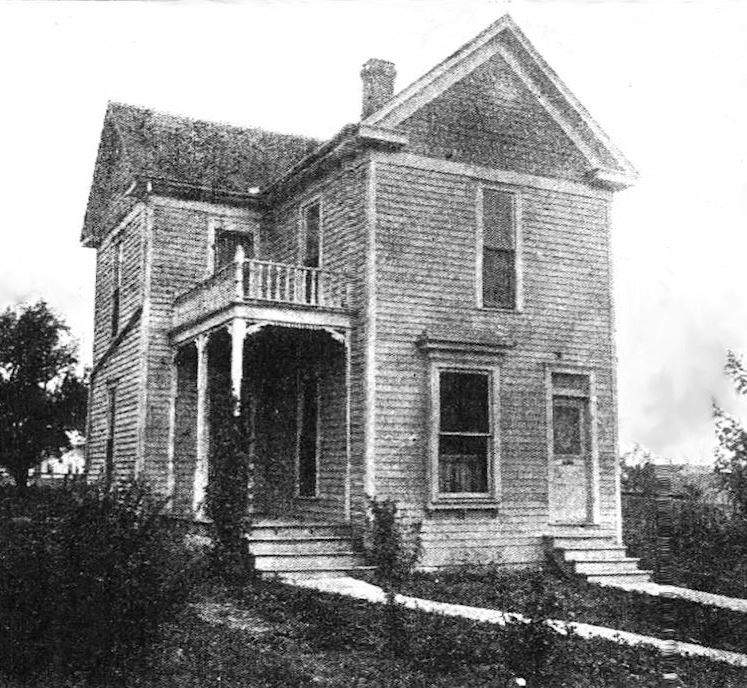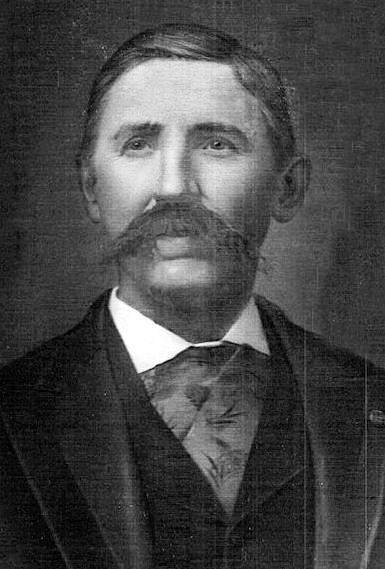James Polk Copeland was born Sept. 24, 1845, in Johnson County in Vienna to Samuel and Sarah Copeland. In 1859, he began working in the office of The Johnson County Enquirer, the first paper printed in the county. The following year, he left Vienna to accept a place on The Union Democrat in Anna and remained there until the beginning of the Civil War.
When troops were called for, he enlisted in Company E, 60th Illinois Regiment of Infantry, mustered into service in Anna. Enlisting as a private, he was promoted to non-commissioned ranks until June of 1863, when he was commissioned a lieutenant. He was captured once, but soon returned to service and was wounded at the battle of Dallas, Georgia, on May 30, 1864, for which he would receive a pension in later life. He was discharged in Atlanta, Georgia, on Sept. 23, 1864.
After returning to civilian life, Copeland resumed journalistic efforts in his hometown, and eventually became the editor and publisher of The Johnson County Journal, his first independent venture.
In May of 1874, Copeland moved to Marion and procured a permit to revive a dormant newspaper, The Flag, and changed the name to The Marion Monitor. As luck would have it, one year later, in May of 1875, the entire southern block of the square that housed the Williamson County Courthouse and the newspaper offices of The Egyptian Press and The Marion Monitor were consumed by fire, all a total loss.
The Marion Monitor was reestablished at once by Copeland and George W. Young, who were assisted by liberal contributions from various Republicans throughout the county. Copeland continued to be editor and publisher, and the paper continued to be, as it had been from the start, soundly Republican, while The Egyptian Press was soundly Democratic.
Copeland served as postmaster of Marion Post Office from 1880 to 1885.
In 1886, Thomas J. Helton started a paper called The Marion Independent, which merged with The Marion Monitor that same year. The name was then changed to The Leader, with Copeland as editor and manager. This new company continued publishing The Leader for about one year, when it became the property of Oliver J. Page, who, after running the paper about a year, sold it to Arthur Roberts and Thomas M. Mitchell. In February of 1904, Copeland and others bought The Marion News from W.R. Lee and established a paper called The Record. At that point, there were three weekly papers in Marion: The Leader, The Egyptian Press and The Record.
In 1913, local attorney A.C. Hentz acquired a controlling interest in The Leader, which was the county's official Republican newspaper. Two years later, W.O. Paisley and his son Oldham purchased the paper and The Marion Daily Republican was born, a newspaper that continues to publish today.
In 1901, Copeland and his wife Minnie established their Marion Greenhouse business on South Court Street. This same year, they built their home at 419 S. Court St. The home was constructed by W.L. Gill at a cost of $1,200. Gill was the same contractor who designed and built the old city hall bank building in the northeast corner of the square two years later in 1903. This home would later become part of the back structure for Fox's Flower Shop. The home and greenhouses were located just to the south of their home, where Fowler Heating/Air is currently located at the corner of Copeland and South Court Street.
Mrs. Copeland was candidate for county superintendent of schools for Williamson County in 1898, and made a splendid run for the office, failing to win at the primaries by a very small majority. She was an advocate for the establishment of a new school building for the city's black children, which opened in 1912 as Douglass School. The school was located across the railroad tracks, east of the greenhouses. At Mrs. Copeland's request, it was named Douglass School in memory of a black statesman named Fredrick Douglass, whose name was so unfamiliar to local residents that the name of the school was usually misspelled with one "s" instead of two.
Copeland died in 1914 and was buried in Rose Hill Cemetery. His wife continued operating the greenhouses until the Depression years. In 1934, she sold the home place and purchased the house across the street at 500 S. Court St., where she continued operating a flower business until her death in 1944.
Copeland Street, named for the family, is a singular reminder of the contributions the Copelands made to the community.



